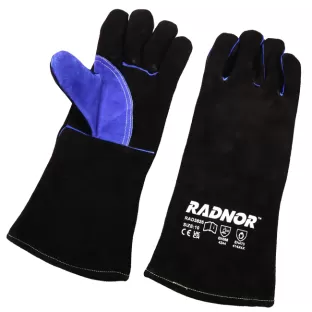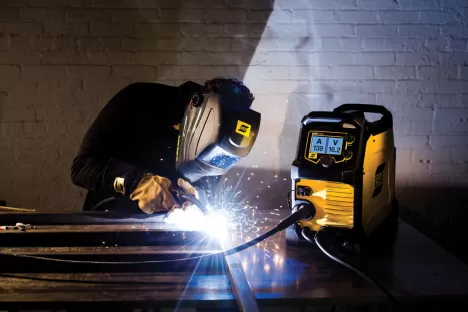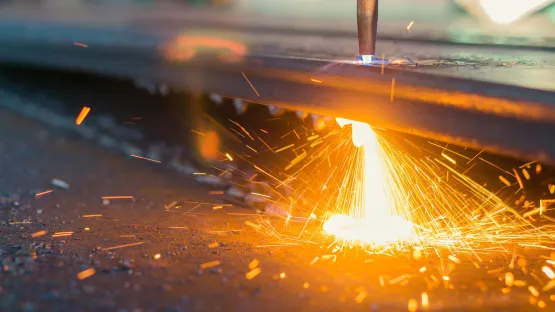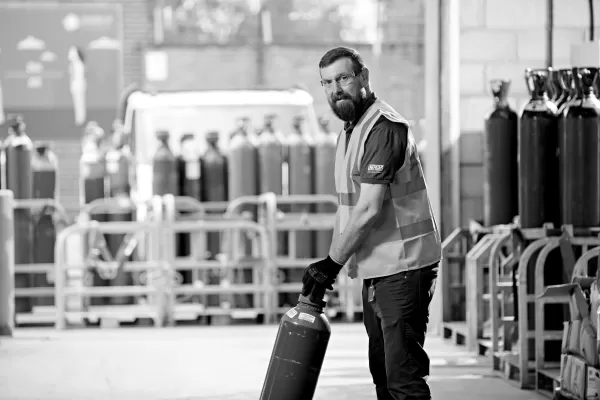Always make sure you are wearing the correct Personal Protective Equipment for the job you are about to carry out.
Always check all equipment before you start welding. Report any defects noted during your equipment checks and get your employers or training providers nominated person to check the defect. Do not start to weld until equipment is confirmed as safe to use by your employers or training providers nominated person.
Major Risk Factors in a welding environment:
Electricity

Since many industrial processes use electricity as a source of generated heat, we need to understand this ‘invisible’ power.
Electric shock can kill : Some power sources are using high voltage electrical input (many times higher than your electricity circuit at home)
- Never touch exposed electrical cables, on the inside or outside of your welding equipment
- Always report damaged or frayed cables - do not use equipment if cables are in a damaged state
- Always wear dry insulating gloves for protection
- Always keep covers and protective parts in good condition and in place
- And be sure to disconnect the power input and lock the connector before any maintenance operations are commenced by an authorised person.
- Do not attempt any maintenance procedure as students are not authorised to carry out this work
Intense Light

Arc rays can burn your eyes and skin; bright visible light combined with Ultraviolet and Infrared radiations can burn your eyes and skin leading to permanent injuries.
- When welding OR in an area where welding is performed;
- Always wear safety glasses with side shields - Always use an approved welding helmet with the appropriate filter shade
- Shade 3 to 6 for cutting & heating
- Shade 9 to 13 for welding applications
Always wear complete body protection made with fire resistant material.
Sparks, spatters & fumes

Welding generates sparks, spatters and fumes that could set materials on fire. Always clear your work space and the surrounding area of any flammable or combustible material.
- Before entering a welding area make sure you are wearing all correct protective equipment to avoid any weld related risks and associated injuries.
- Weld in an area that can protect you from arc rays and contain spatter
- Avoid breathing welding fumes directly - always wear your protective welding helmet and respiratory protection equipment as specified by your welding training provider or your employer whenever you weld
Hot Surfaces
Cylinders of compressed gases
Best Practice
Thank you for reading and following this guidance, it will help to ensure your safety. This information is provided to support and guide you on safe and best practice. This does not override the obligations of your employer or training provider under the Health and Safety at Work Act to carry out their own risk assessment. All these resources are available to you with an understanding that we do not accept any liability for how you observe this guidance and whether you implement these measures correctly.
Do you have any questions on welder safety?
Please complete our contact form below and we will get back to you as soon as possible.
More information
ISO14175 compliant welding gases
Frequently Asked Questions:
How to choose which gas to use in MIG or MAG?
What is the difference between the MIG and MAG welding processes?
What is the difference between brazing and welding?
How to adjust the gas flow when welding?



